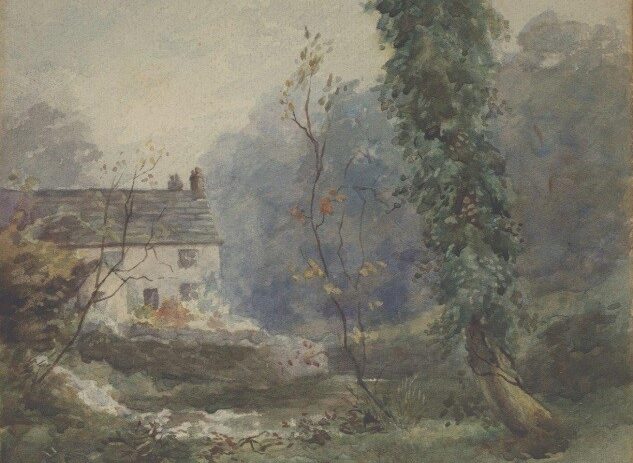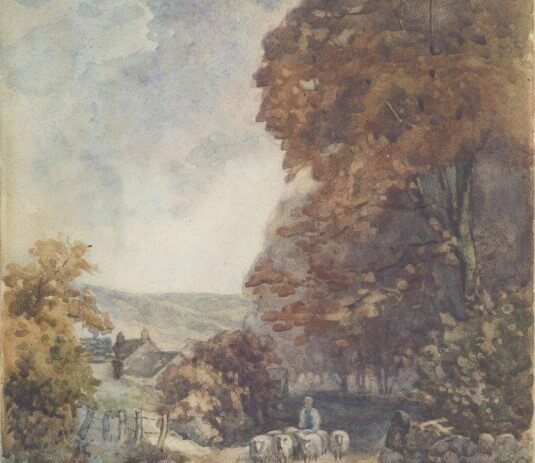
Ben Baines was born in Walkley, son of an ironsmith. He had an engineering business that employed one or two men in metal-turning – a typical Sheffield “Little Mester”. In his spare time he painted watercolours, and found great inspiration in the Rivelin Valley and the work of his fellow painters amongst the Rivelin Valley Artists.
By 1924 the mills were already showing signs of neglect and nature was beginning to take over. Nevertheless this painting of cottages at Rivelin corn mill shows that this was still a thriving settlement with at least one cottage garden. It also gives a sense of the power of the river where it first began to serve the string of watermills downstream.
The Cornmill sat at the point where the river Rivelin flowed out of the open countryside and down into the working watermill landscape. It is easy to see why a Sunday spent painting in this peaceful place would have been a welcome escape from the pressures of the working week and the memories of the recent war years. So far as we know, Scott-Temple was the only member of the group why actually lived at the Rivelin corn mill. All the other artists must have walked here through the valley from the city and its suburbs although Malin Bridge, three miles downstream, had been a tram terminus since May 1908.
Nethercut mill was one of the few working water mills still running in the 1920s and this must have made it a particularly attractive subject for the Rivelin Valley Artists. Whilst almost all the main mill buildings have now disappeared from the landscape, there are numerous examples of the stone-built infrastructure that captured the river water and powered the mills. The small stone culvert arch in the right hand foreground is typical. These details in the landscape are powerful reminders of the Rivelin’s important industrial heritage
By the 1920s the river Rivelin had lost most of its industrial significance, but this was still a farming landscape. The sheep in the foreground are a reminder of the open moorland landscape from which the Rivelin flows. In the middle distance the buildings of the Rivelin corn mill hamlet are clearly visible, marking the junction between the agricultural landscape and the industrial city. The village of Stannington lies just beyond the far horizon.
This is the view that inspired the artist and philosopher John Ruskin to build his museum for Sheffield’s workers at Walkley in the 1870s. It was still inspiring artists many decades later. This watercolour was painted in 1947, so despite a lifetime spent working in the metal industry Ben Baines, and no doubt many of his fellow artists continued escaping to the natural beauty of the Rivelin valley through the roaring twenties, the depression of the 30s, the second world war and beyond. The blue hills on the horizon would become a part of Britain’s first national park in 1951, thirty years after the Rivelin Valley Artists first came together.
This painting captures some of the romantic quality of a working industrial landscape in decline. The string of dams, the small quarries, weirs and ruined water mills all provided endless inspiration for the Rivelin Valley Artists in the first few peaceful years after the First World War. Ben Baines painted this view many times, could always find a buyer and no doubt the extra income helped his family through the tough times of the 1930s.







